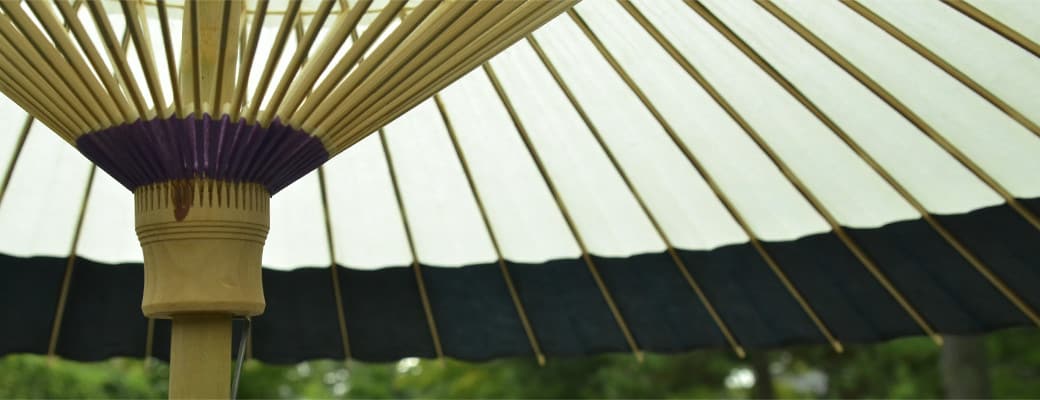FAQ
A.After using it on a rainy day, drain water well, open the umbrella, and hang it in the shade to dry.
A.Please keep it in a well-ventilated place when it is completely dry.
A.You can contact us through our contact page! We will be happy to assist you.
A.When carrying a wagasa, hold it with a light grip slightly below the head, or hold the string attached to the head if it is a jenomegasa, or the leather string fastened to the head if it is a bangasa.
A.A rain umbrella may be difficult to open due to the oil that the Japanese paper is spread with for waterproofing. When opening a Japanese umbrella, point the head of the umbrella downwards, and when the umbrella opens slightly, lightly hold the inner rocro and push it upwards to open it slowly and carefully. Never forcefully put your hand inside or apply force. It may cause damage.
A.If the washi is torn, the repair method depends on the condition. It is impossible to match the type and color of the washi. Many of the inquiries we receive indicate that the paper has already lost its life and would be better purchased than repaired. If the bone is broken, it is also not repairable. If the umbrella opens but the hajiki (stopper) retracts and the umbrella closes, the hajiki (stopper) is defective. Repair is possible. However, it depends on the damage, so please ask for details.
A.Bangasa is a Japanese umbrella characterized by its stout, thick-boned, and strong construction, taking advantage of the qualities of its materials, bamboo and Japanese paper. Generally, bangasa are used by men. Janome-gasa is a beautiful slender Japanese umbrella with colorful Japanese paper and beautiful thread hanging. Janome-gasa is used by both men and women.
A.For storage, wipe the Mai parasol dry with the parasol closed and store it with mothballs.
